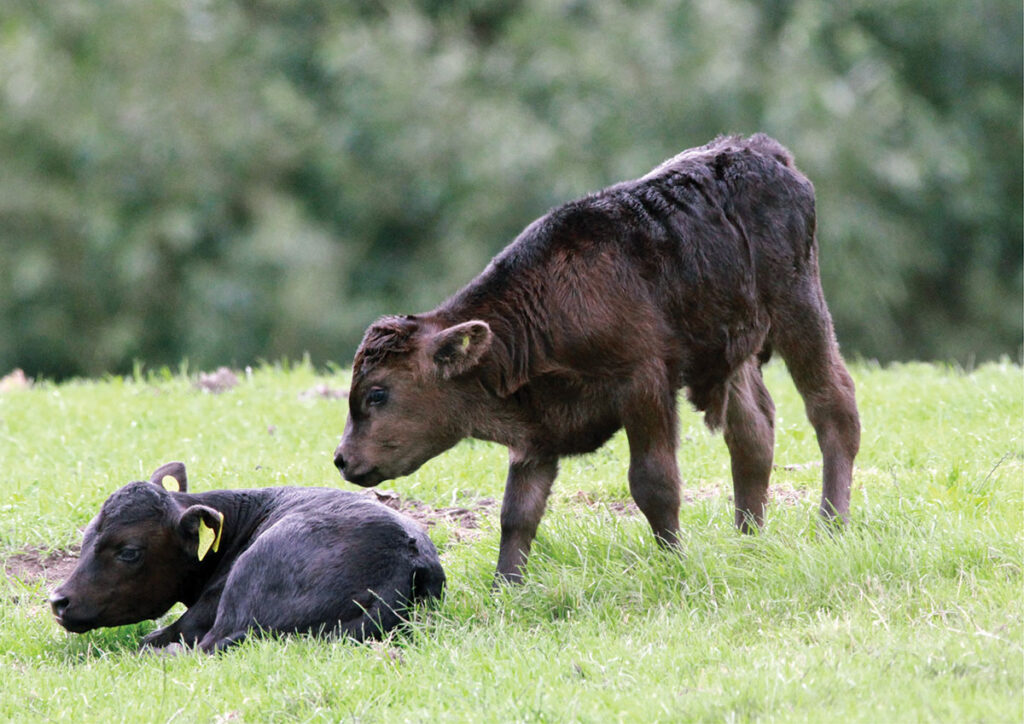
Producers should monitor calves and conditions of cows
Just like children, calves should be achieving certain “milestones” in their development. There are actions producers can take and observations they can make in order to help their calves hit the mark.
As soon as a calf is born, monitoring the amount of colostrum it gets is critical.
“Within several hours, if we aren’t fairly certain they have gotten some colostrum or an ample amount; then we need to intervene and use a supplement or a replacer depending on the situation or how much or how little colostrum they got,” Andy McCorkill, livestock field specialist with the University of Missouri Extension, said.
Another action needed shortly after birth is making sure the calf is dried off. This is especially important in cold, snowy and wet conditions. Though momma cows will lick their babies, and in the process get them dry, in bad weather conditions it is more difficult for them to get it accomplished in a timely manner.
There are some assessments producers should be making to keep track of their calf crop’s development. First, examine how they look.
“Calf condition is probably the biggest indicator of calf health in the short term,” Johnny Gunsaulis, county extension agent, U of A Division of Agriculture in Benton County, Ark., stated.
Other positive health indicators include a healthy hair coat and a good weaning weight. However, if a calf exhibits sunken or weepy eyes, droopy ears, has an unthrifty appearance or seems depressed, consider it a sign the calf may be sick or malnourished.
A dam’s condition at calving has a direct impact on the future development of her calf. Ideally, at calving, the dam should have a body condition score between five and seven. Good body condition and flesh are signs the momma cow is doing well nutritionally.
A healthy dam equates to a healthier calf. If a momma calves with a less than adequate body condition, she may not have the stamina to raise a calf to its potential. “If they calve in at a three or four body condition, both the quantity and quality of the colostrum are going to be reduced and that’s going to lead to the likelihood that the calf is not going to get enough milk and be sickly for the rest of its life,” McCorkill said.
If the cow’s condition starts to decline too much as the calf grows, specialists suggest it’s a good idea to wean those calves a little earlier than normal. This allows the dam a chance to recover. “It takes the lactation component of her nutritional requirements out of the equation and we can often times put the gain back on the calf, cheaper and more efficiently than the cow can,” McCorkill added.
Observing the dam’s condition can help producers make culling decisions as well. “Those females that lose so much weight during lactation that they fail to rebreed might need to be put on a cull prospect list, assuming we have provided adequate forage for the herd and have taken care of parasites,” Gunsaulis advised.
On the other hand, if a female looks too good at the time her calf is weaned, that may be a red flag as well. “At weaning time, if the dam looks fleshy but the calf looks thin, she’s not giving of herself enough and should probably be culled,” Gunsaulis stated.
Experts say these observations are easier to make if a herd is managed for a defined 45-to-80-day calving season. Many important herd management practices such as vaccinations, parasite control, castration and weaning are more efficient when producers are comitted to a distinct calving season.






